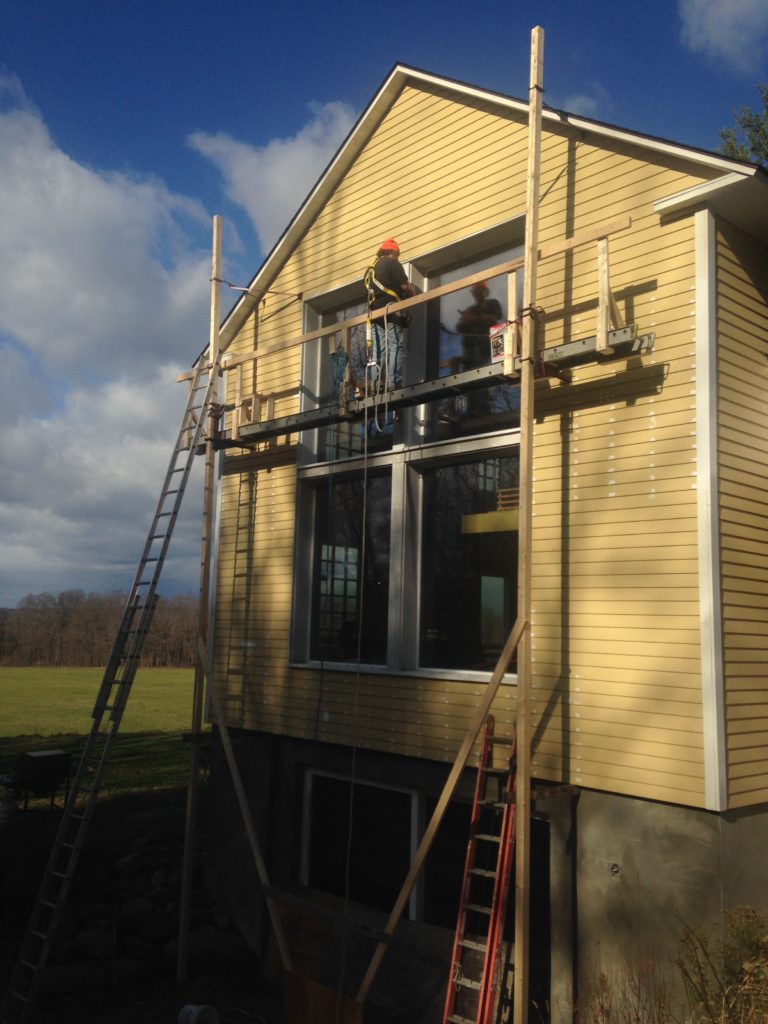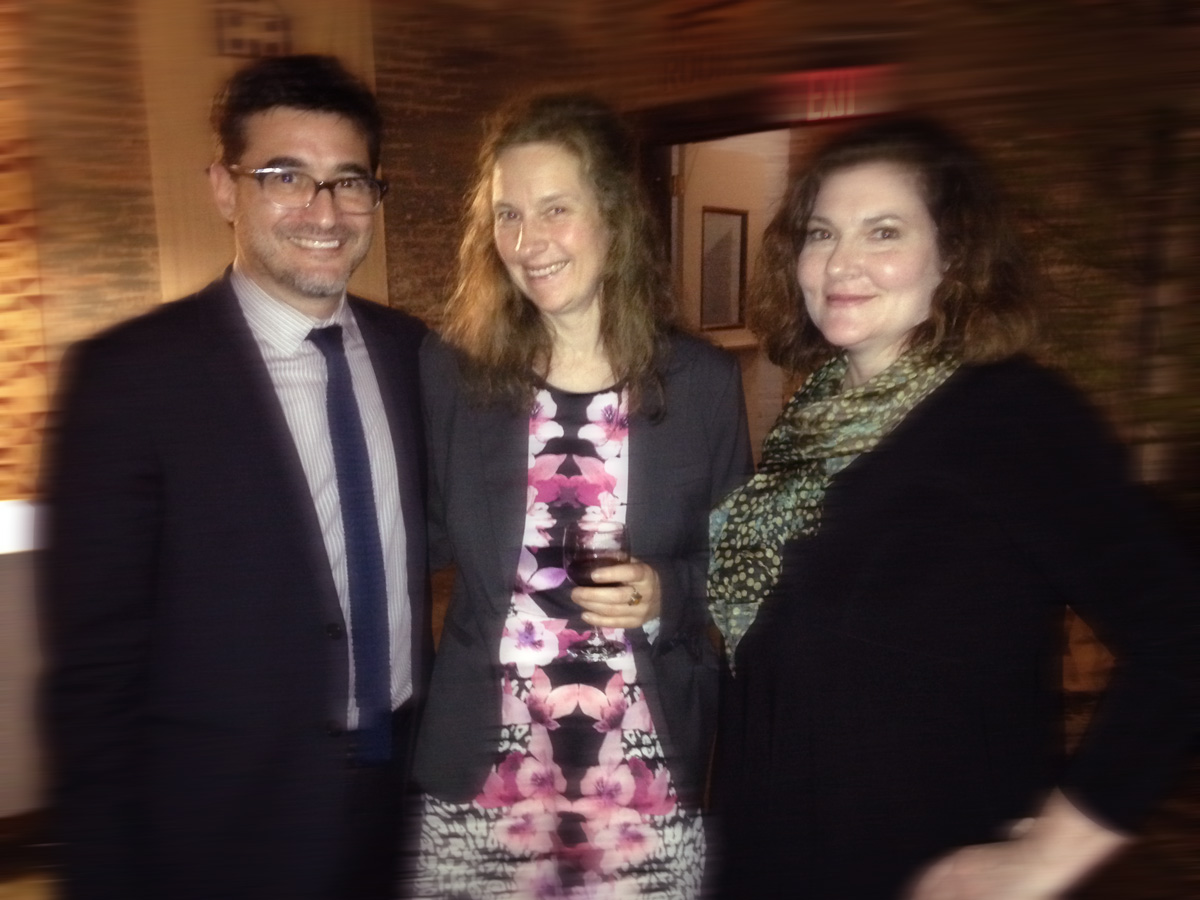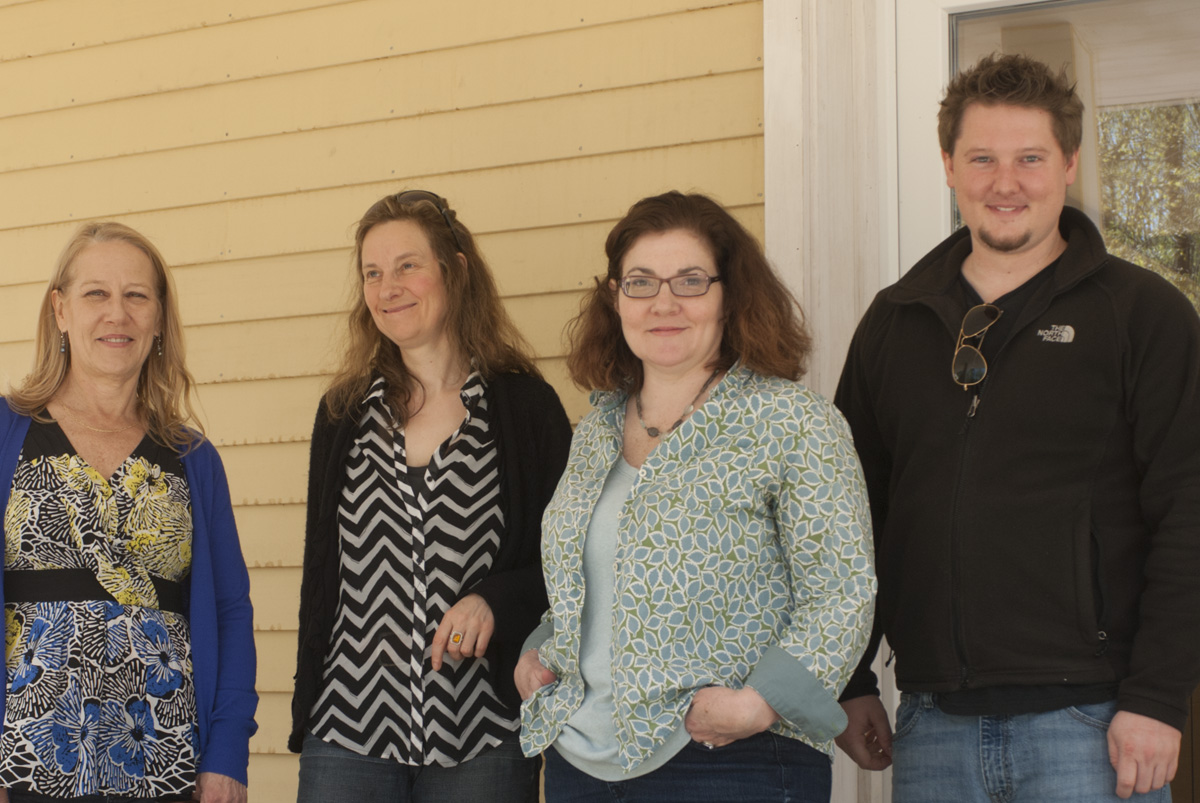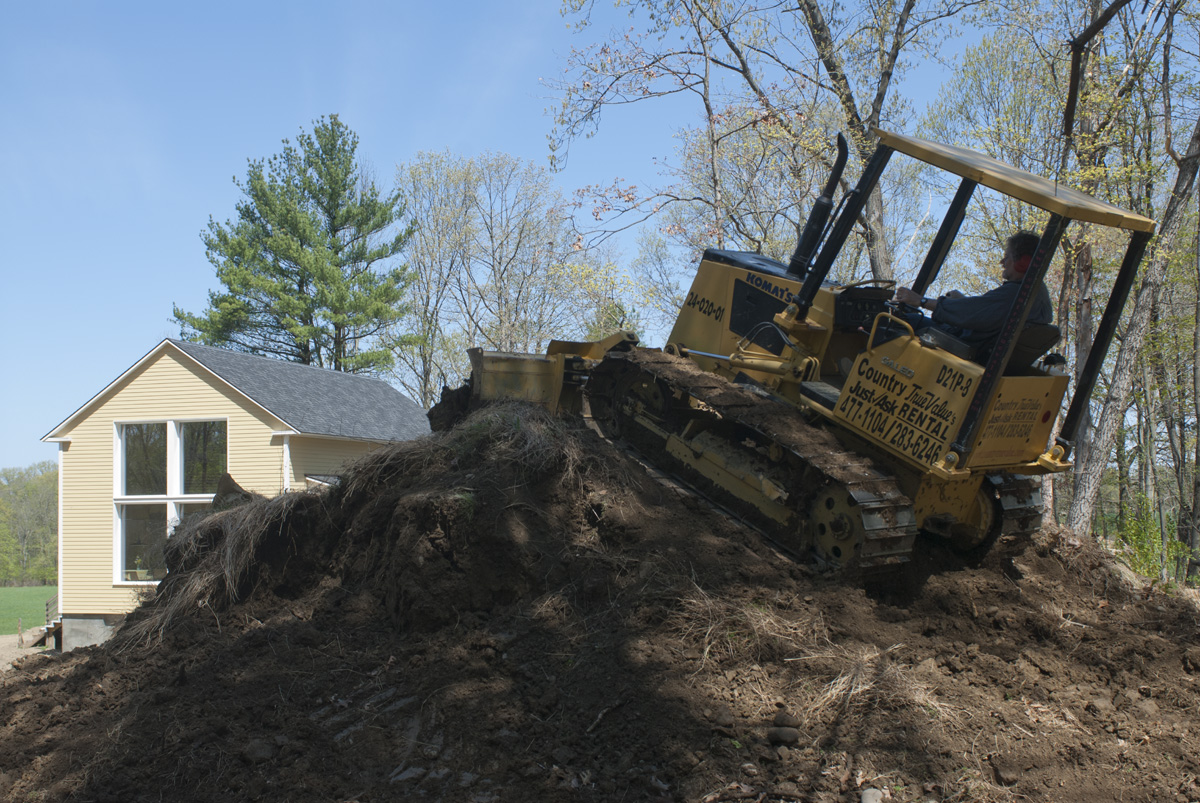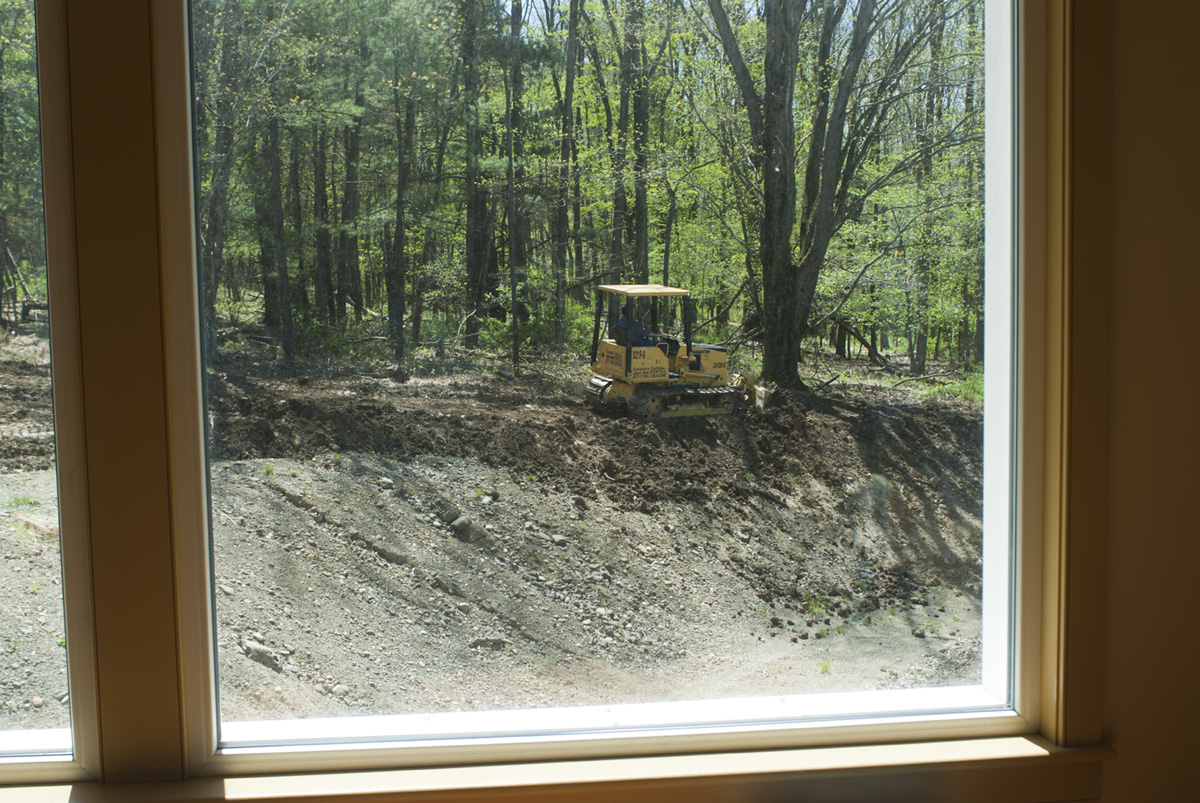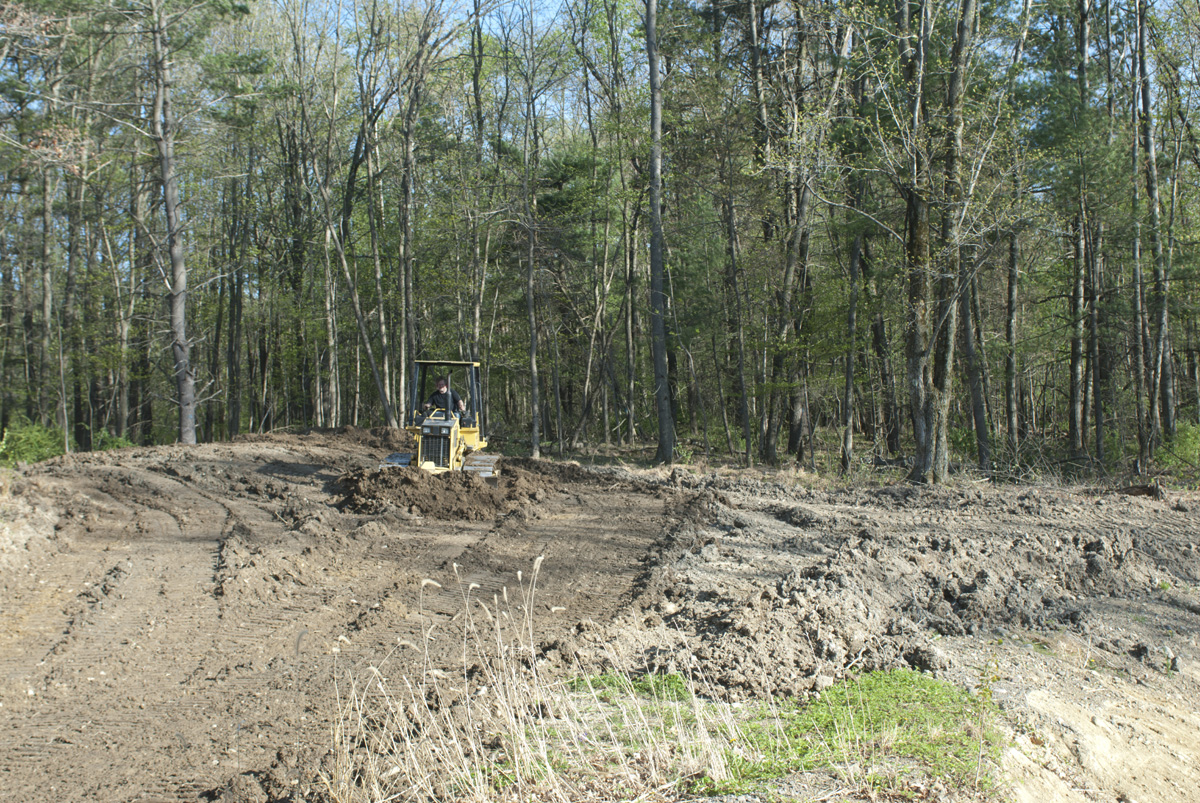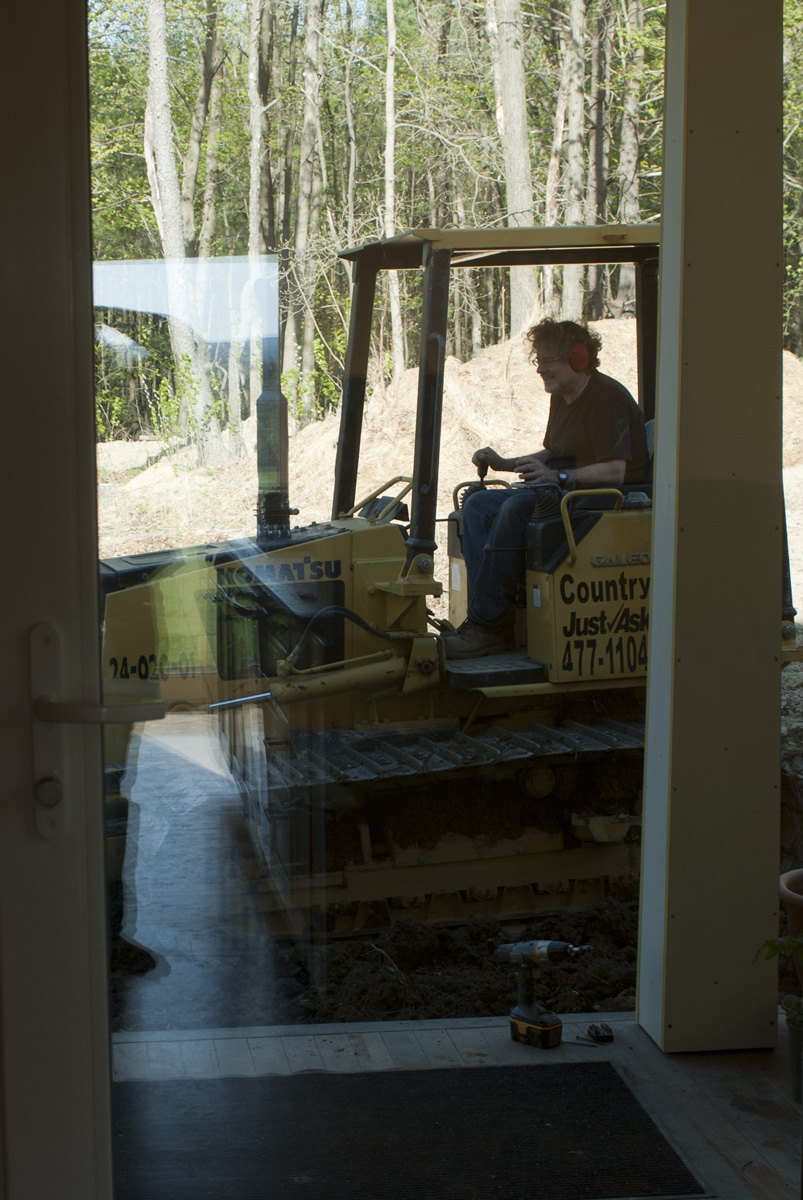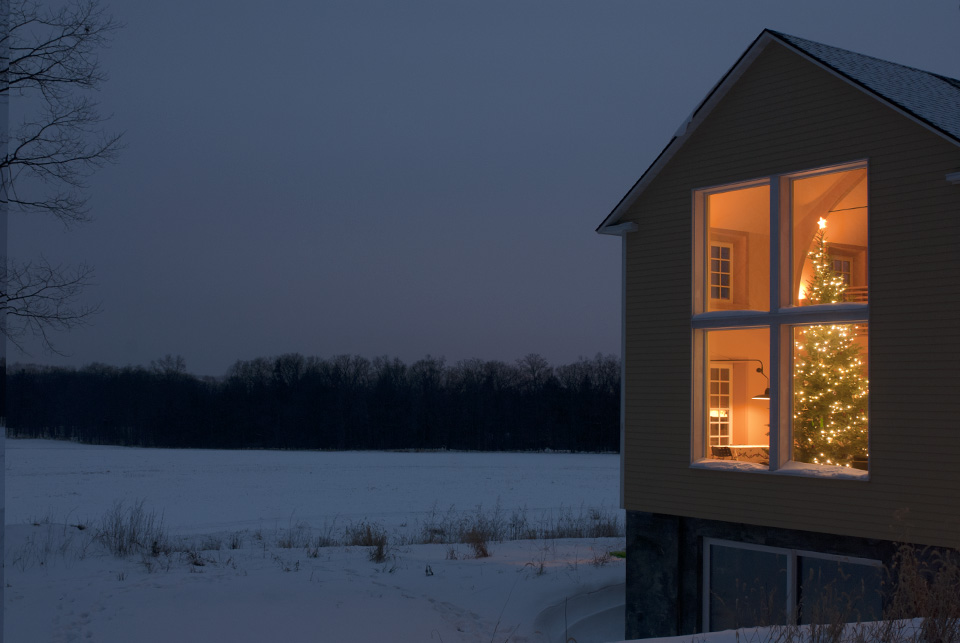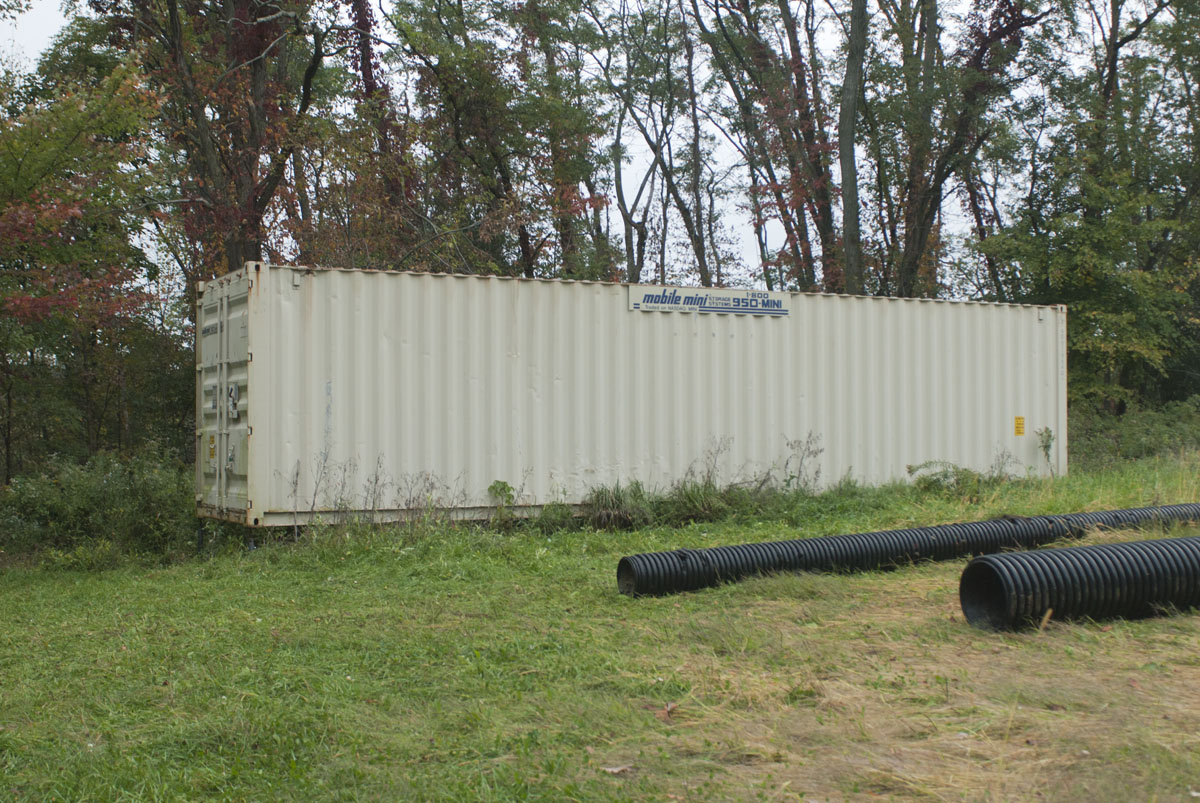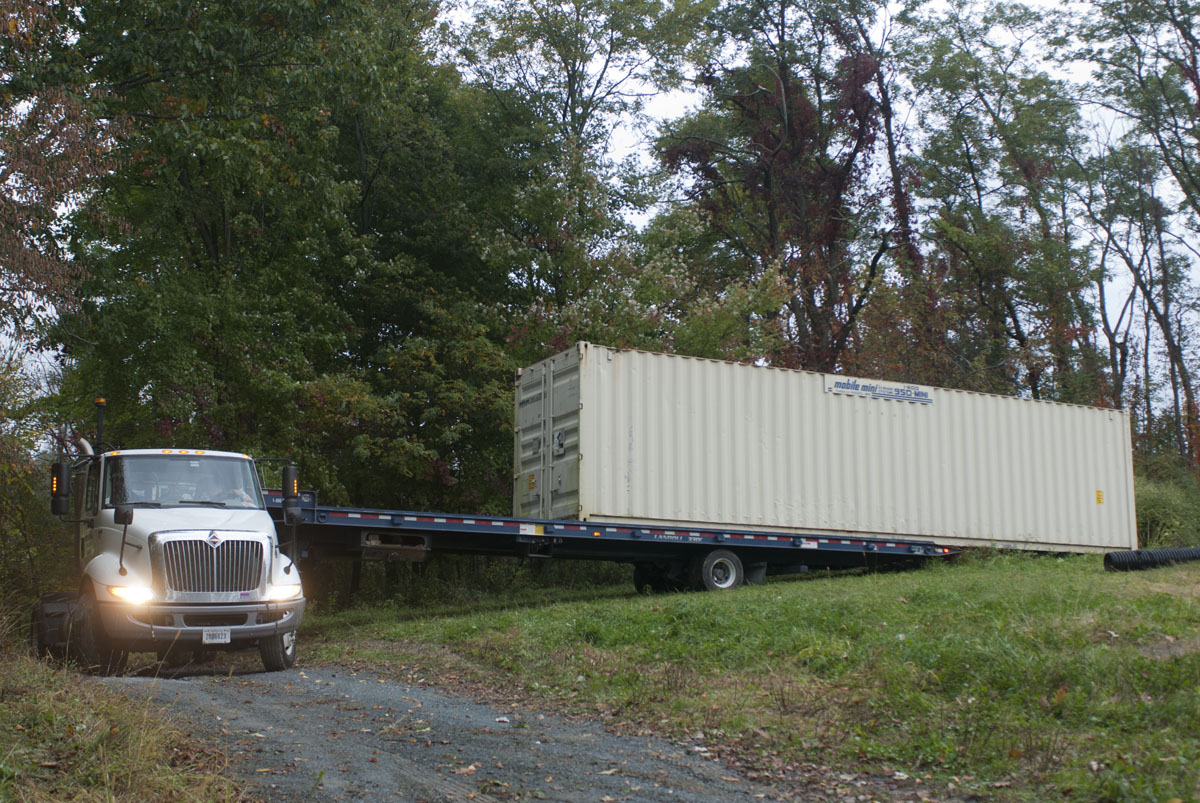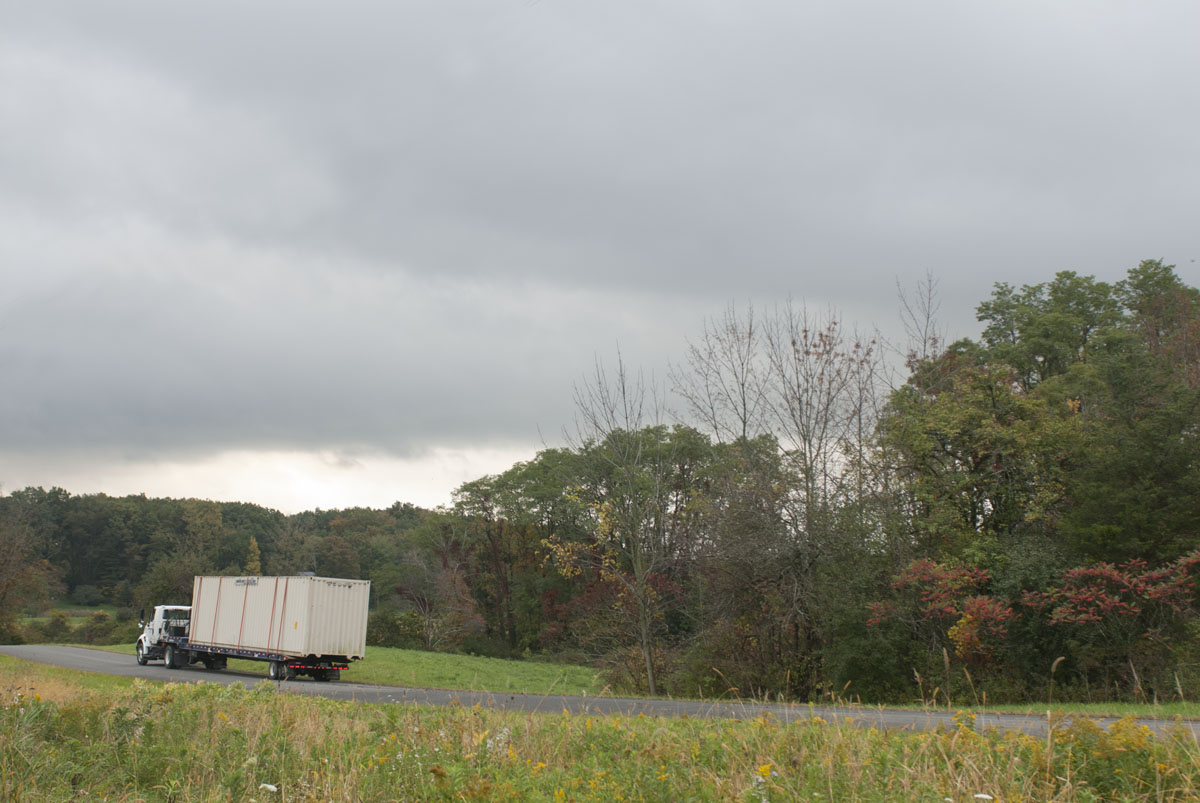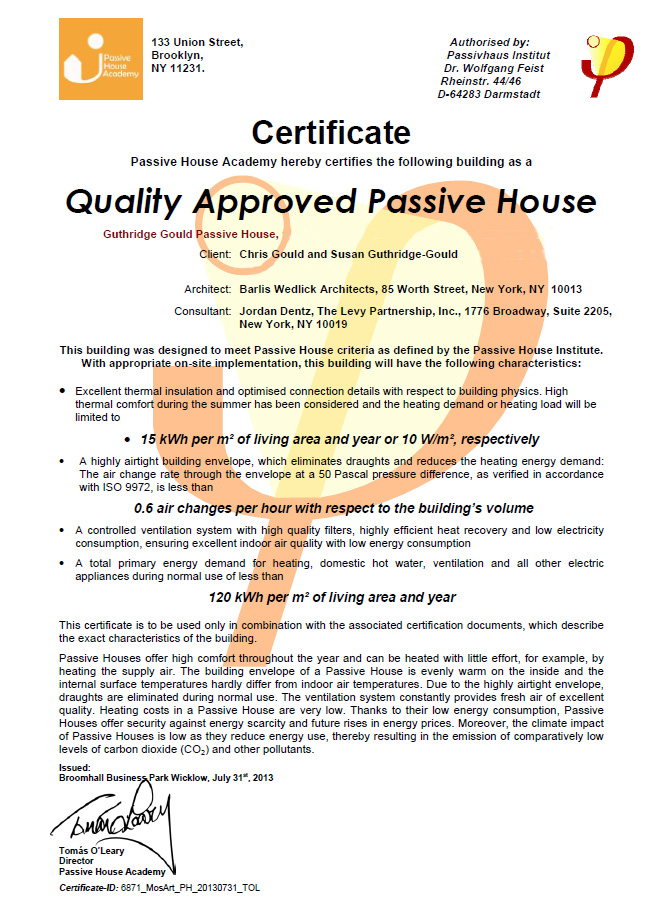Author Archives: admin
Habitat for Humanity Gala
Alan Barlis, Katrin Klingenberg and Susan Guthridge-Gould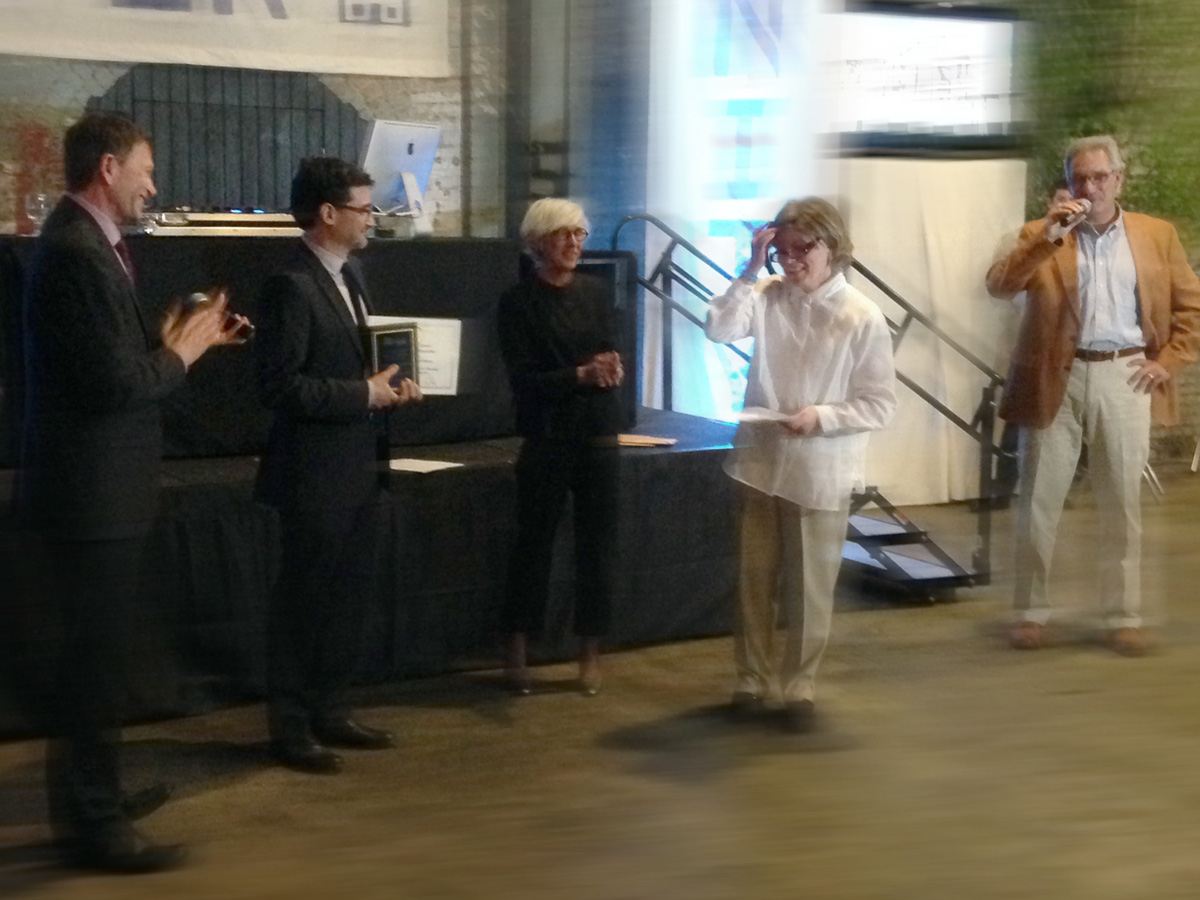
Dennis Wedlick, Alan Barlis, Sara McWilliams, Brenda Adams and Kirk Kneller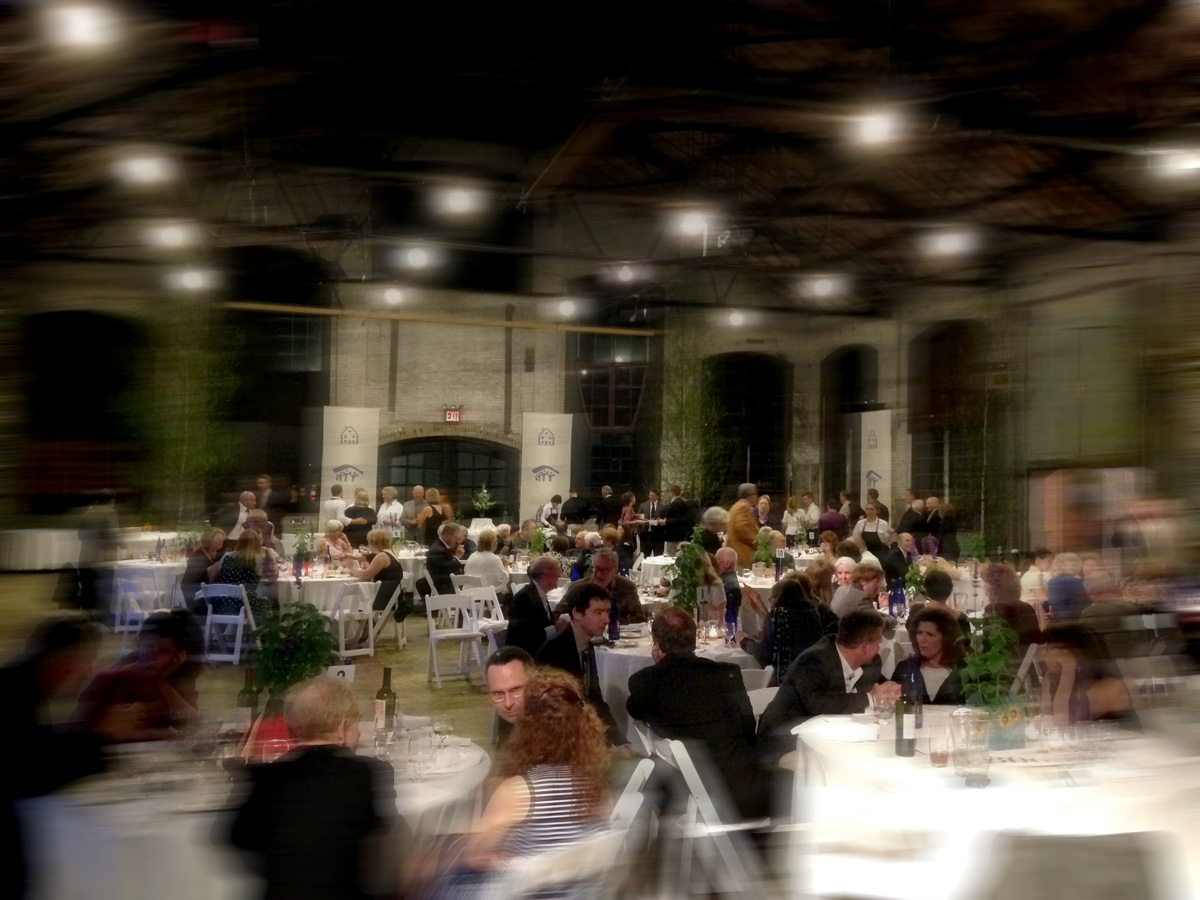

Thank you, Dennis and Alan of BarlisWedlick, for inviting us to be your guests at the Habitat for Humanity Gala. Congratulations on winning Builder of the Year for designing the wonderful Columbia Passive Townhouses in Hudson for Columbia County Habitat. Seeing you and members of your team – Liza Bridich and Mark Bailey, and Jordan Dentz and Emanuel Levy from The Levy Partnership – was a genuine pleasure. After one full year of residency, it was a rare opportunity to celebrate the vision and accomplishment that makes our home so special. We felt like we were at the heart of the Passive House community in the Basilica ballroom with Katrin Klingenberg and Dennis Wedlick — along with other local Passive House owners Paula, Naznin and Ian (see his blog on Hall Hill).
PHIUS founder Katrin Klingenberg visits
Betsey Pettit, Katrin Klingenberg, Susan Guthridge-Gould, Chris Petrone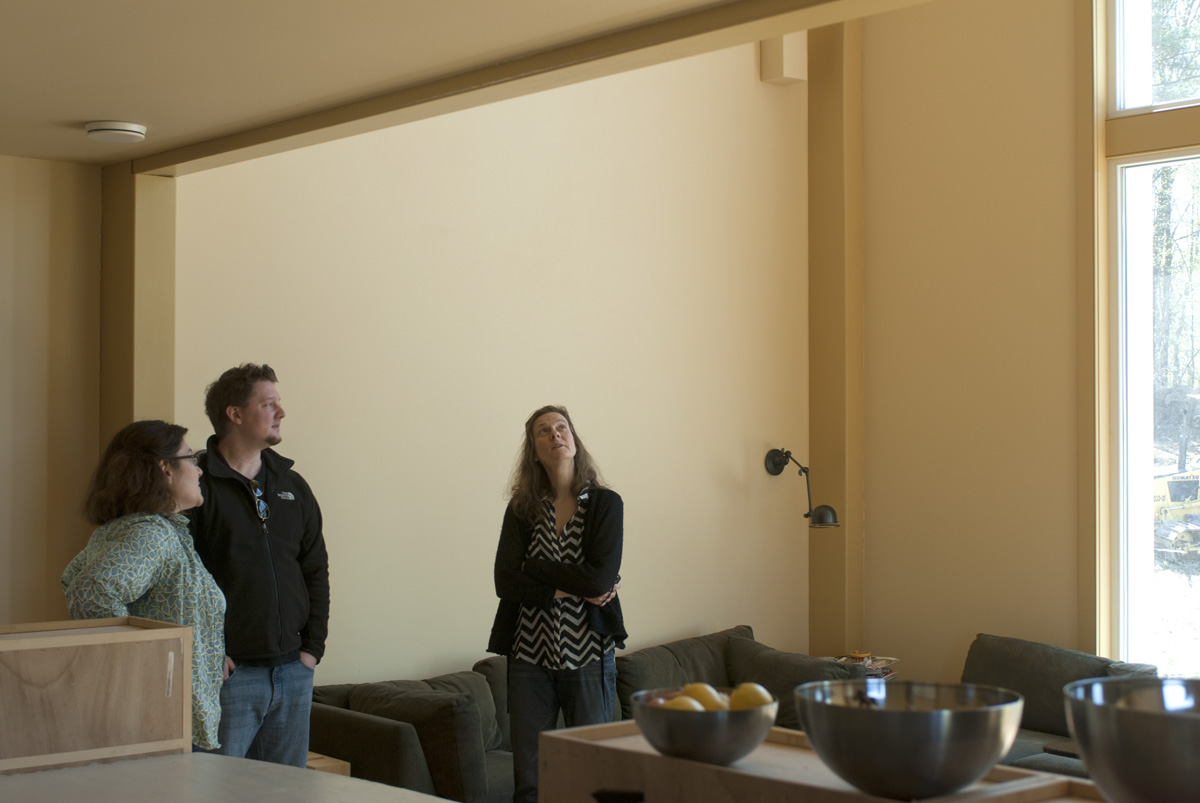
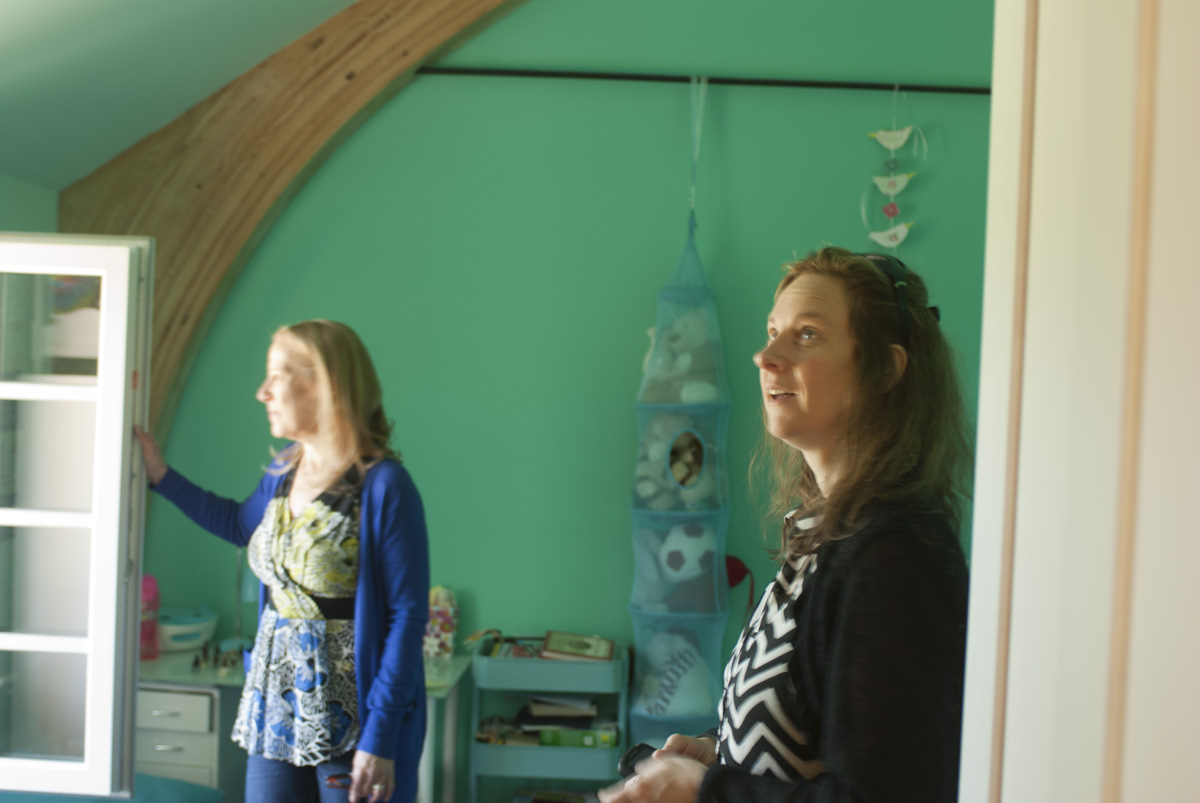
Betsey and Katrin in our daughter Lily’s room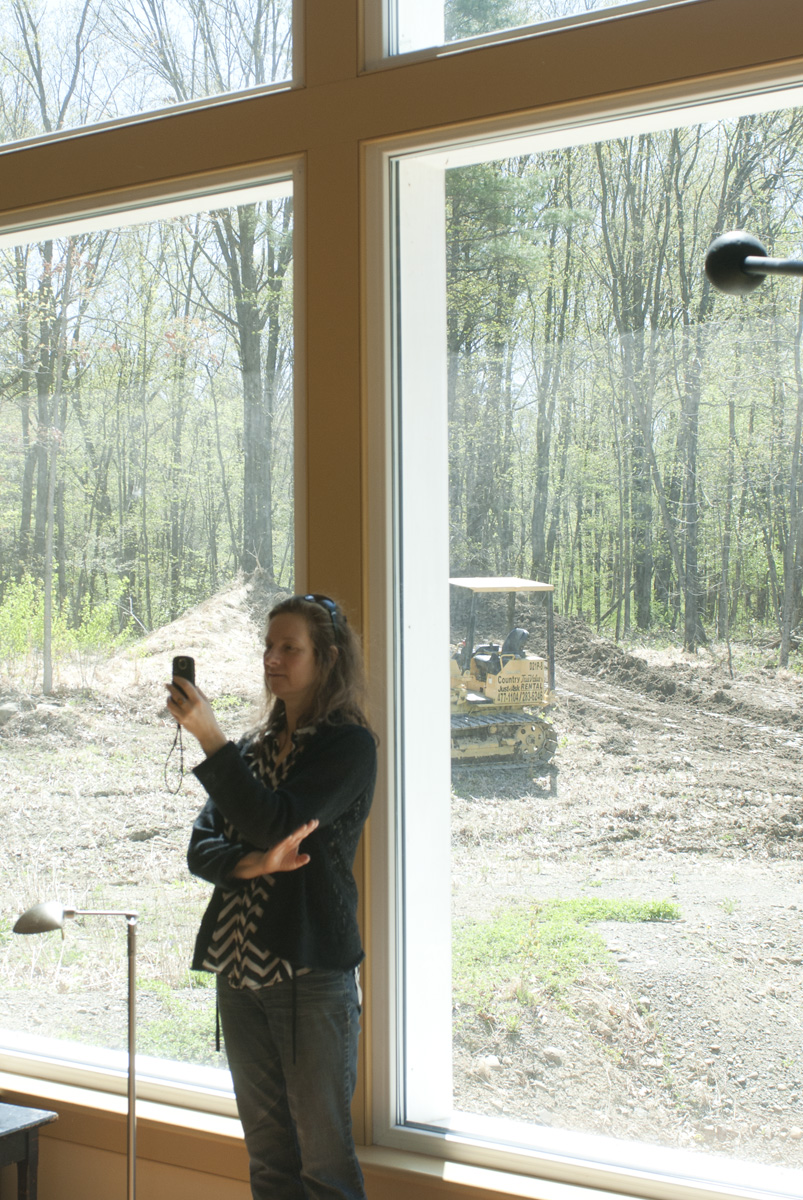
Chris and I were delighted to welcome the leader of the Passive House movement in the United States to our home on May 11, 2014. Katrin Klingenberg was in the area to attend the Habitat for Humanity Gala the previous night, a guest of our architects at BarlisWedlick. We skipped our usual script about what makes a Passive House (she knows). “This is beautiful!” she said on entering the living room, which rises 30 feet. She liked the peak, noting how SIPS and glu-lams fit neatly for a tight seal.
At the Gala, I had shared the backstory to my energy conservation agenda: family farm, proposed nuclear power plant, long fight in my teenage years. Standing in my sunny kitchen, I added that the house sits in the circle of a cooling tower, drawn on a utility company map in the late 1970s. Fast-forward a few decades and here I am in my supremely energy-efficient home with an energy celebrity!
Katrin is co-founder and executive director of the Passive House Institute US (PHIUS), which has trained 1,000 designers, builders and energy raters and certified 450 Passive House Consultants. She is also a licensed architect in Germany. Read her blog here.
Spreading topsoil
Mini split keeps it warm
The house is consistently warm and comfortable even on the coldest days. Unlike the house next door, no drafty doors or chilly windows remind you the North Wind is blowing. It can be quite a shock to step outside the airlock.
Marc Bailey of BarlisWedlick recently asked us how the mini split is working. New models coming onto the market can handle colder weather than our model can, which has a lowest operating temperature (heating) of -5 degrees F. Our reply: The mini split seems to function fine at low temps. We have one 9,000 BTU (cooling) / 12,000 BTU (heating) ductless wall-mounted unit, Fujitsu model no. ASU9RLS2.
Observations
- Most of the time the controls are set to “heat” rather than automatic, with the fan on. This seems to make the house warmer. It’s set for 70 degrees F.
- Chris cleans the filter screens often. Performance is noticeably better when we keep the screens clean.
- The ceiling fans help to distribute the warm air and even out the temperature throughout the house. If the ceiling fans are off, the first floor can be about 3 degrees cooler than the second floor.
- The upstairs bedrooms are often about 2 degrees cooler than the rest of the first and second floor in the morning, which is probably because we keep the doors closed at night. In this very cold weather, the rooms may be 3 or 4 degrees cooler.
- It is warmest on the open deck area above the kitchen, which overlooks the big South window and is closest to the mini-split. That’s my office area now. On cold days Chris has been using a portable Delonghi electric heater in his lower level studio, which is far from the mini split.
Our plans call for three mini splits in this three-floor house but we have only installed one so far. The walls are plumbed and wired for the remaining two, the installation of which will cost $3,000 each. We are waiting to see how the house feels to live in, and the lower level remains unfinished at this time. So far, we are finding that the mini split in the lower level is mostly needed for heating, and the one in the master bedroom is mostly needed for cooling.
For another blog entry, I’ll find out why some people call this sleek white box a “mini split” while others say “heat pump” or “air handler”.
Did Santa use the HRV ducts?
Photo studio, before and after
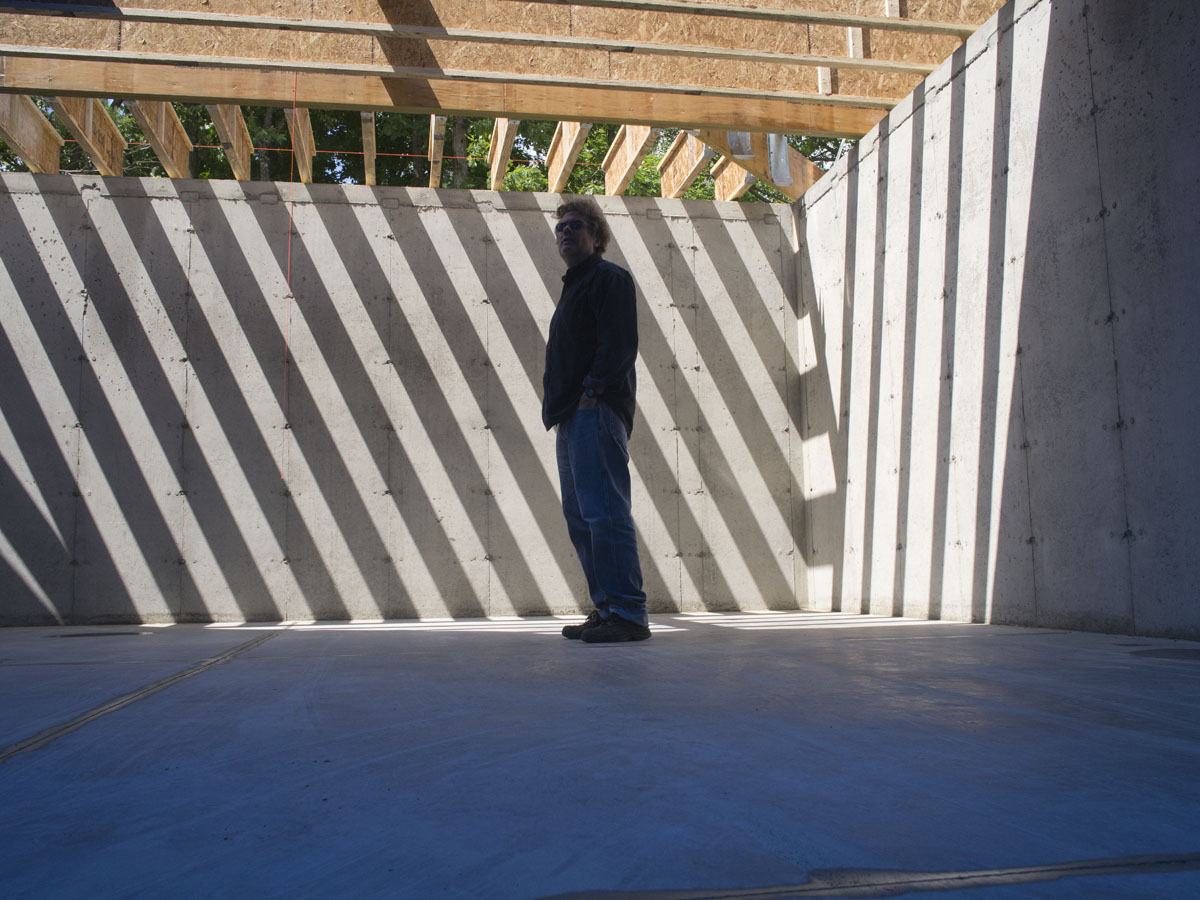
 “Before” in June 2012. “After” in November 2013. Our house is designed for live and work, and it works very well. The studio is in the only cave-like area of the lower level, perfect for light control. It’s where Chris creates illustrations for sale on Getty Images.
“Before” in June 2012. “After” in November 2013. Our house is designed for live and work, and it works very well. The studio is in the only cave-like area of the lower level, perfect for light control. It’s where Chris creates illustrations for sale on Getty Images.
So long, container
Finishing the exterior foam and stucco
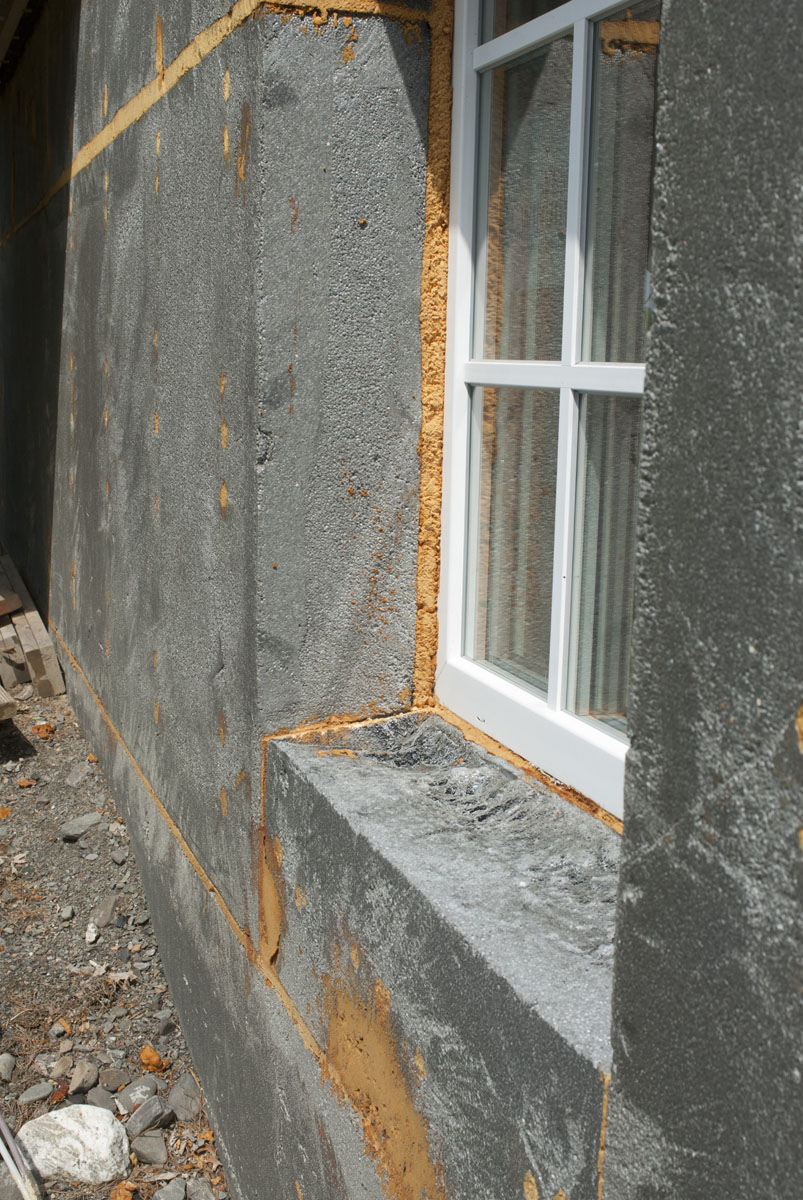 Our exterior work was wrapping up in autumn 2012 when cold winter temperatures arrived in November and delayed the application of exterior stucco to the lower level. The area under the front porch was tented for warmth and stucco applied. But most of it remained bare naked through winter and early spring. By June 2013, exposure to sun and weather had started to degrade the surface of the 10-inch-thick blanket of Neopor foam that wraps the foundation. It was finally warm enough to try again.
Our exterior work was wrapping up in autumn 2012 when cold winter temperatures arrived in November and delayed the application of exterior stucco to the lower level. The area under the front porch was tented for warmth and stucco applied. But most of it remained bare naked through winter and early spring. By June 2013, exposure to sun and weather had started to degrade the surface of the 10-inch-thick blanket of Neopor foam that wraps the foundation. It was finally warm enough to try again.
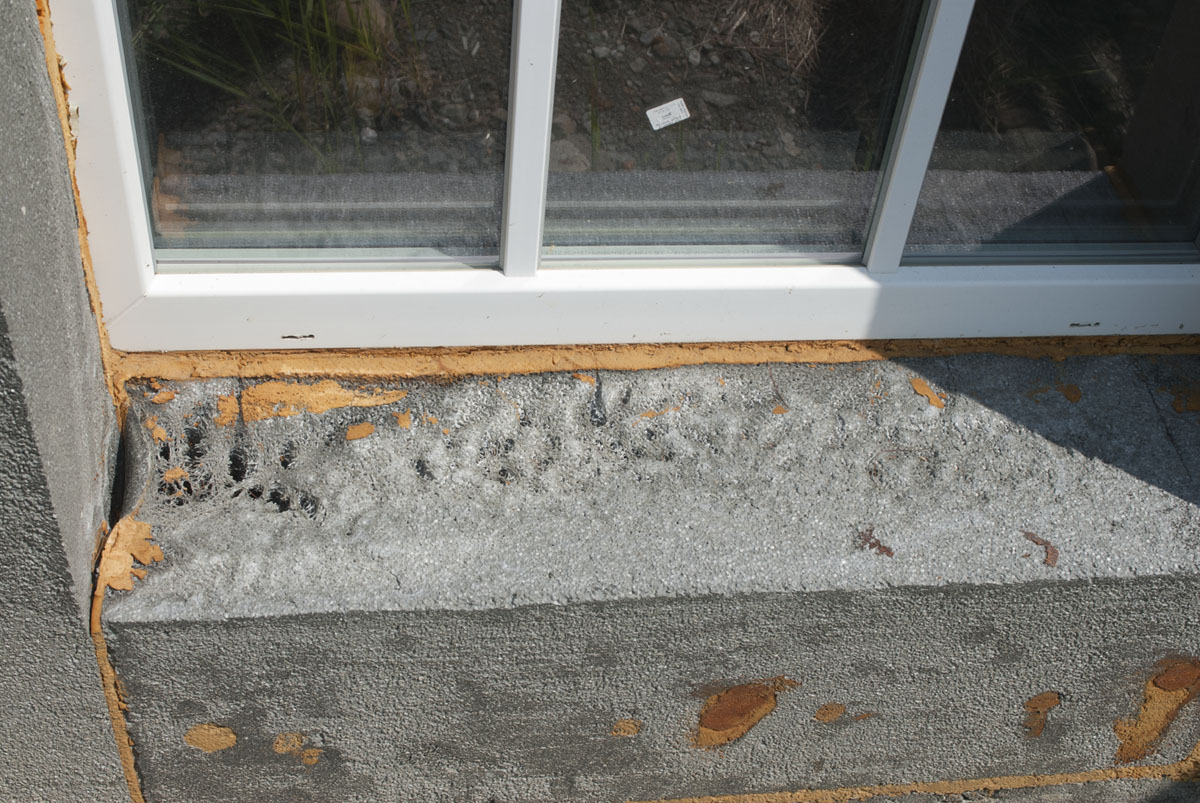 Exposure to sunlight and the elements melted the foam.
Exposure to sunlight and the elements melted the foam.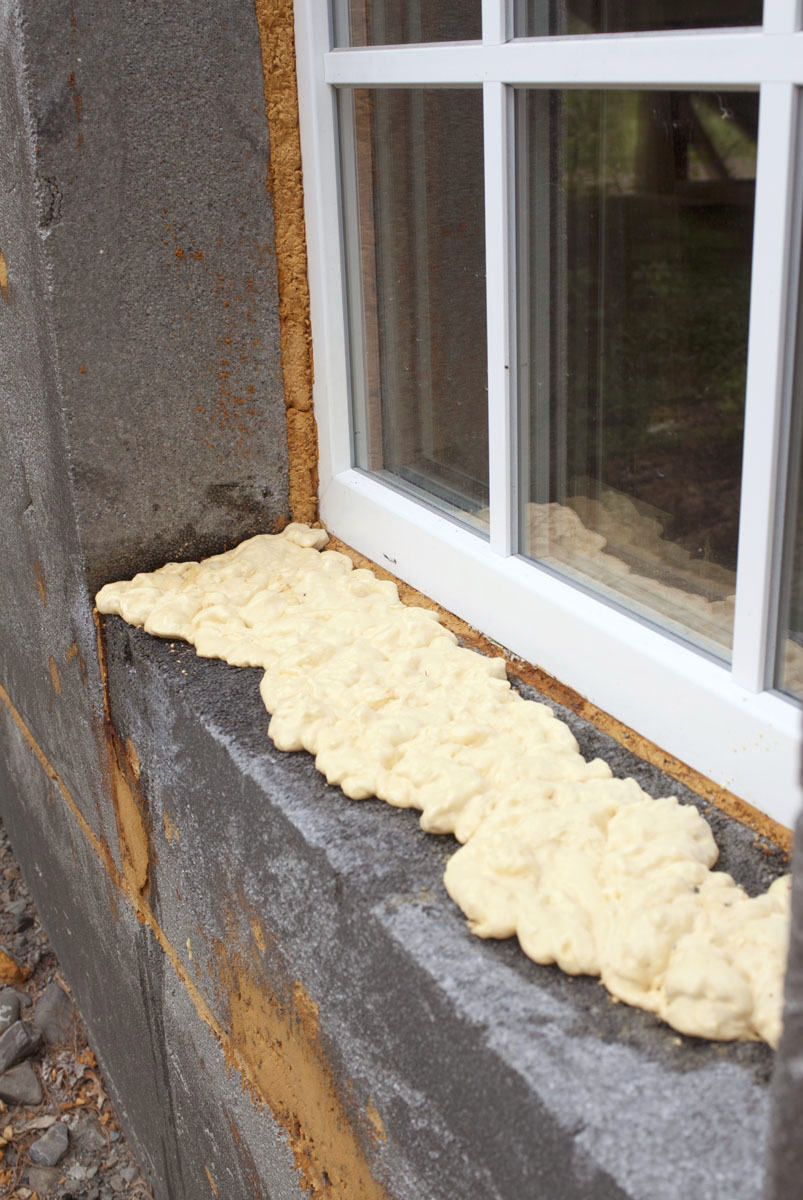 We filled in the gaps with new foam.
We filled in the gaps with new foam.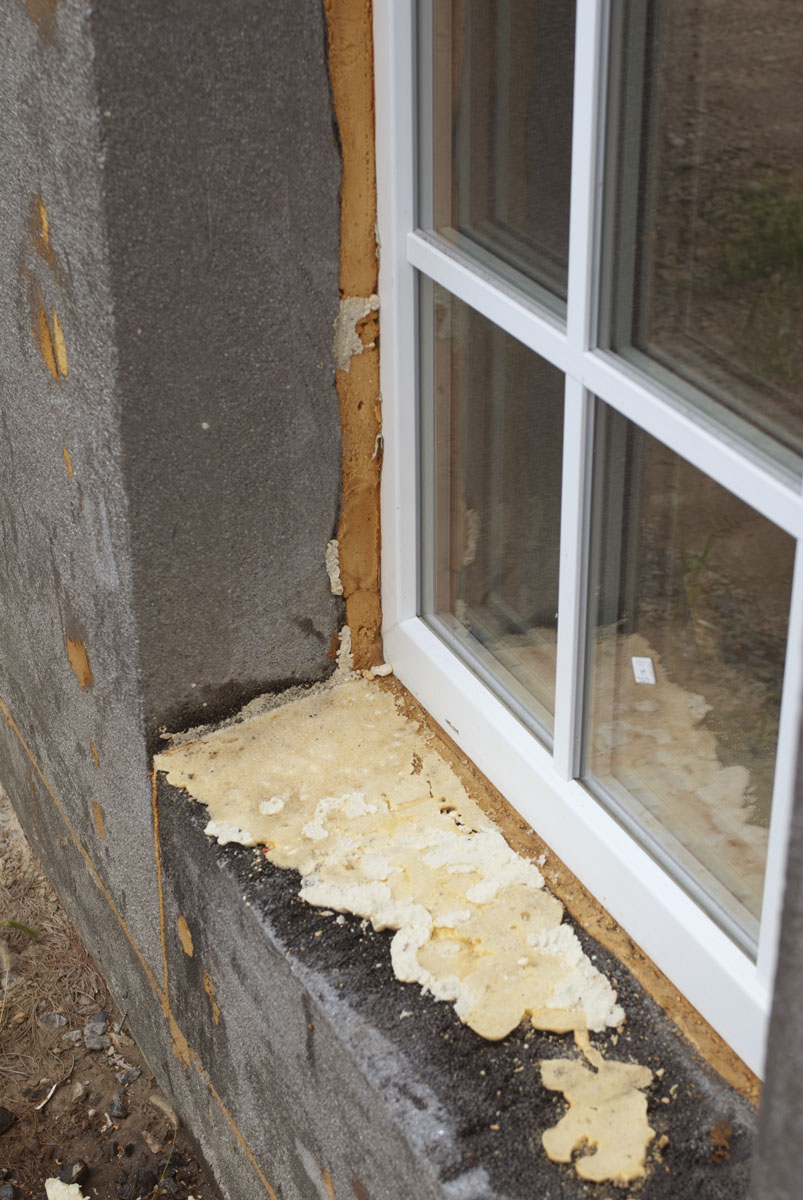
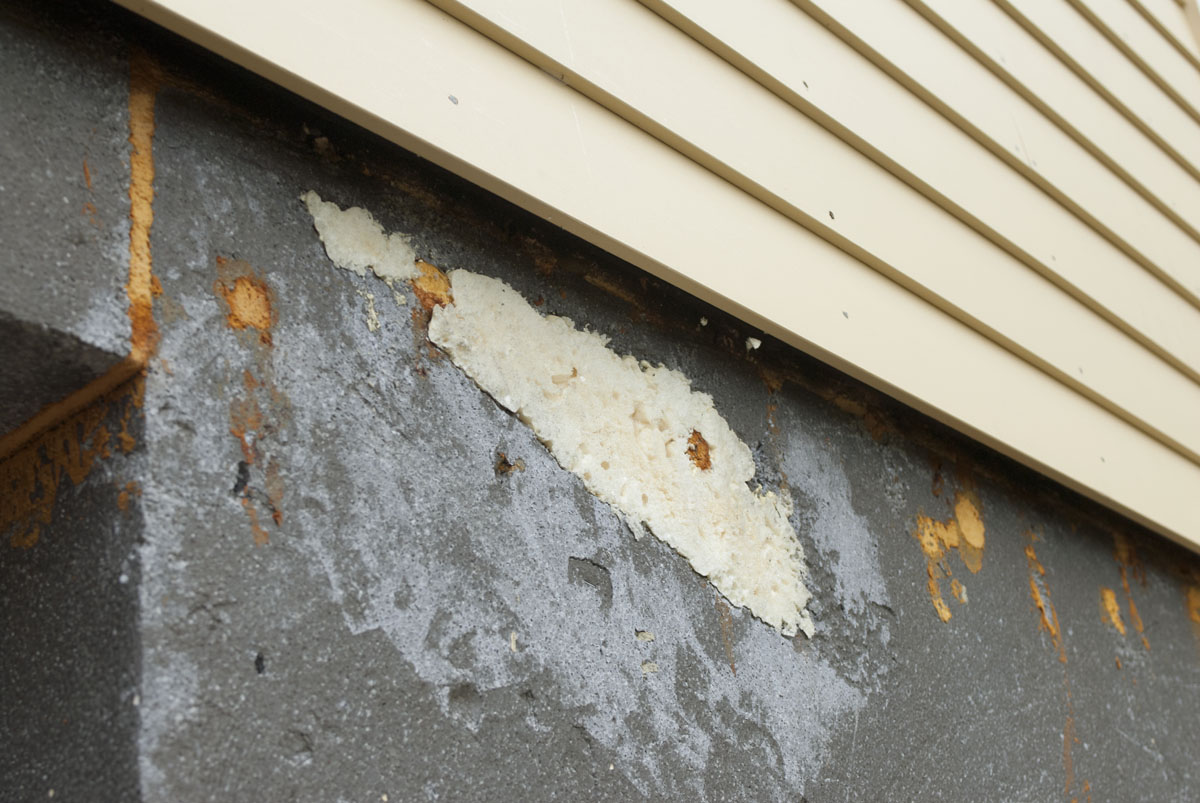 The above two images show our repair patches.
The above two images show our repair patches. 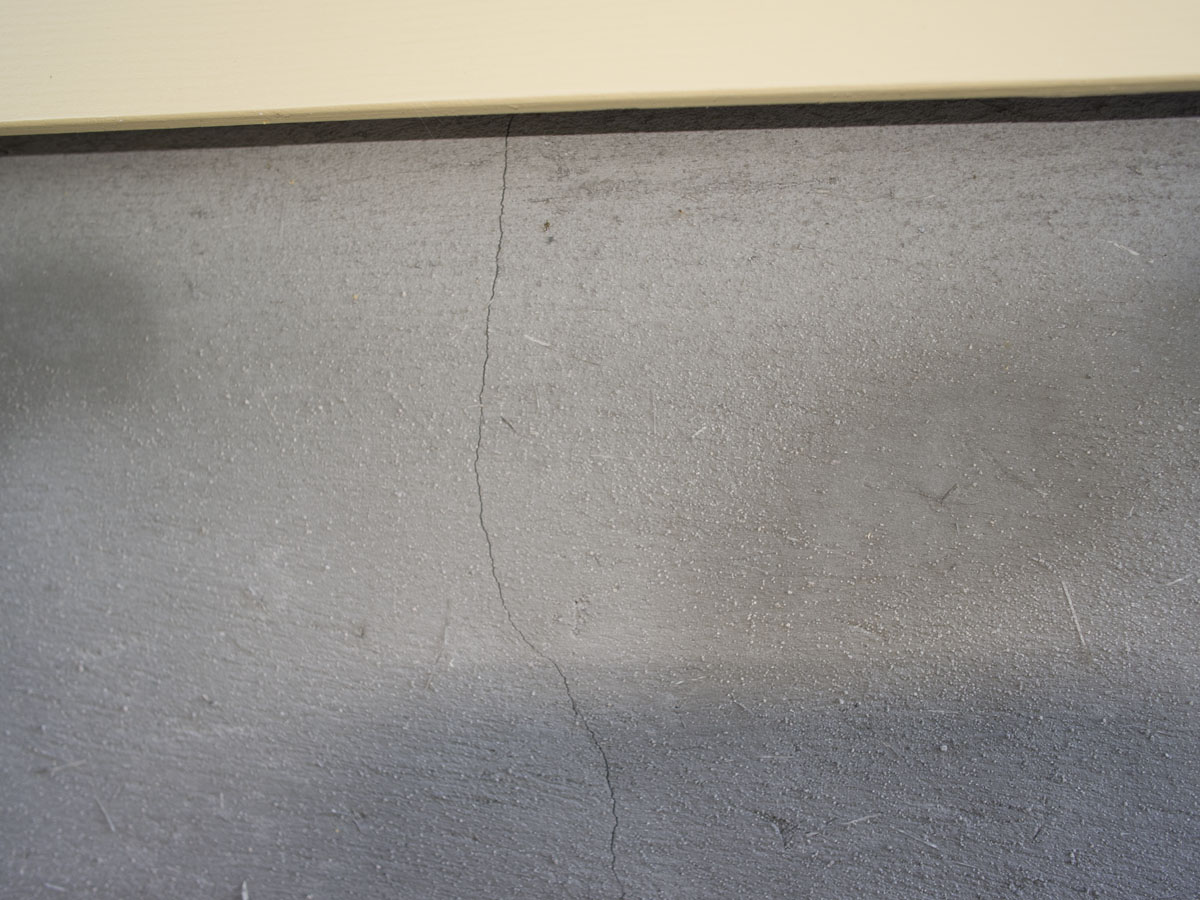 Also, the partially completed stucco from last fall had cracked.
Also, the partially completed stucco from last fall had cracked.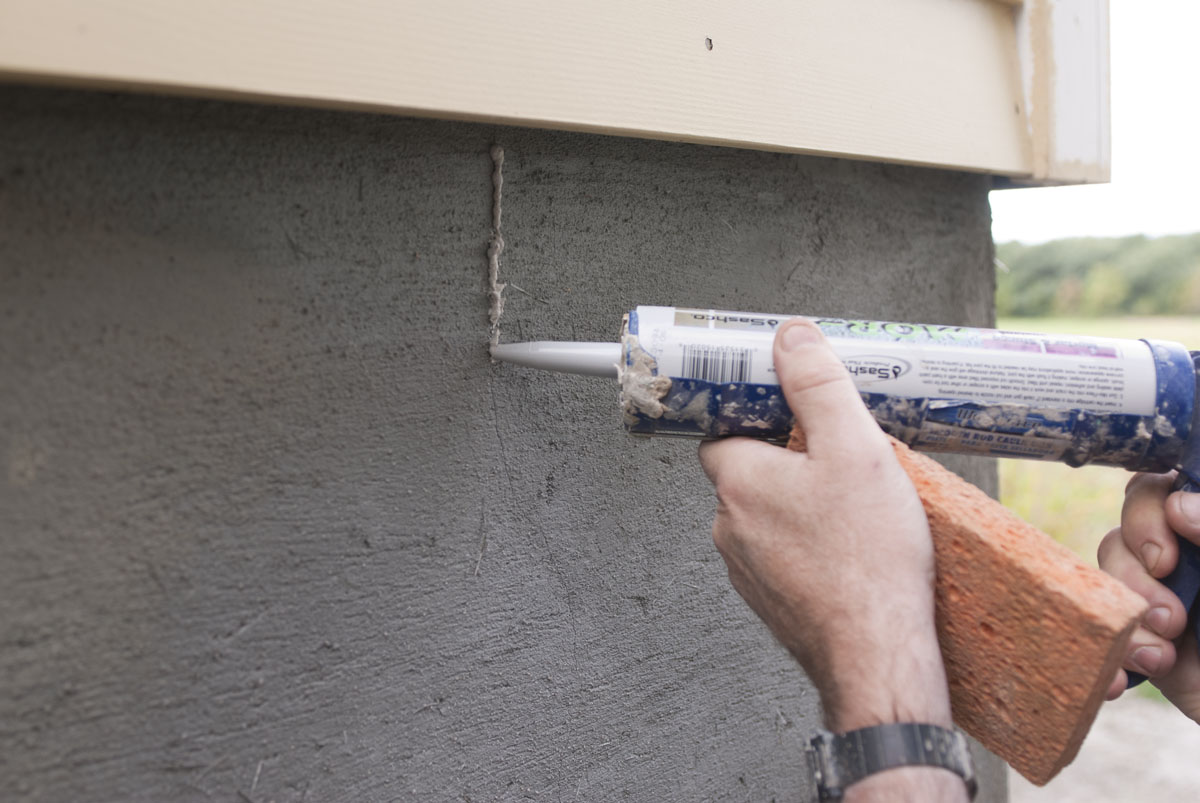
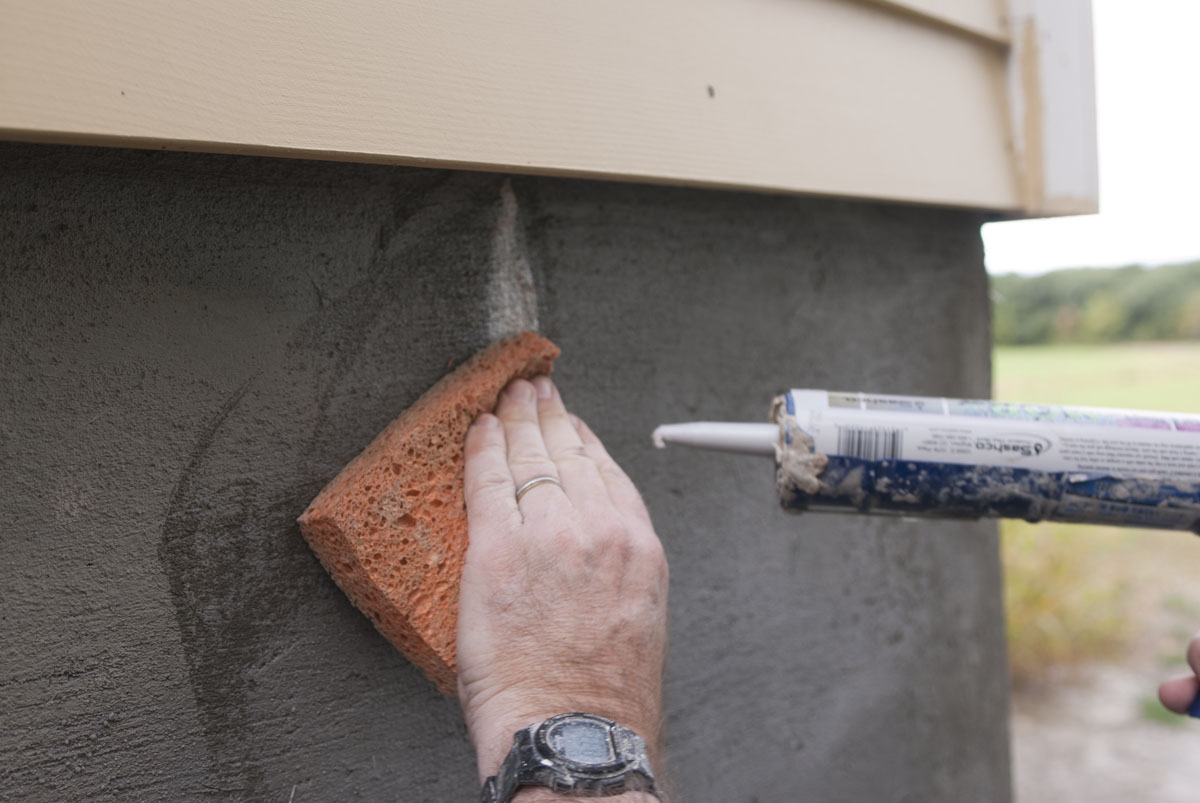
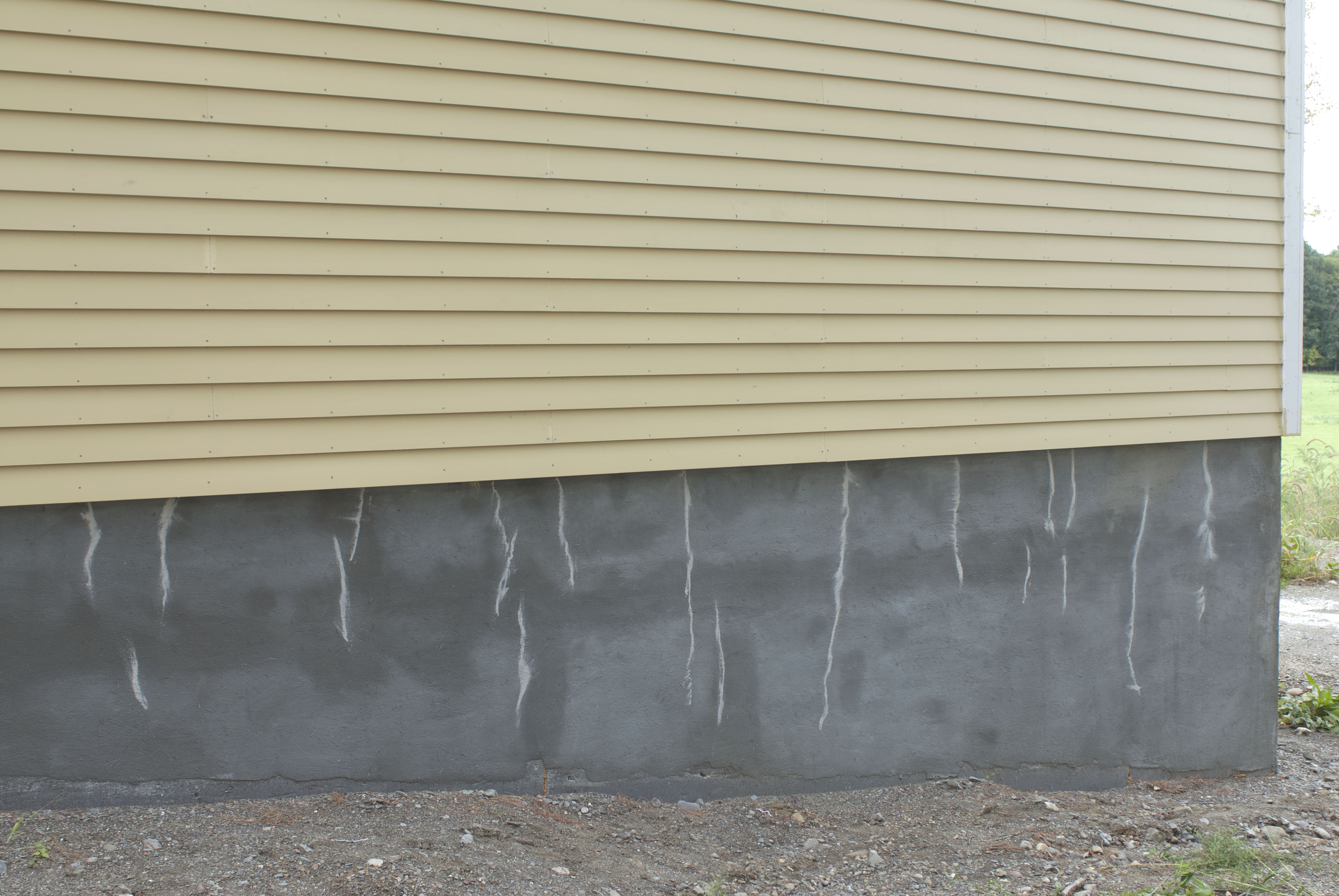 We have used masonary caulk on these cracks. Later, the stucco will be painted for a more uniform and lighter grey.
We have used masonary caulk on these cracks. Later, the stucco will be painted for a more uniform and lighter grey.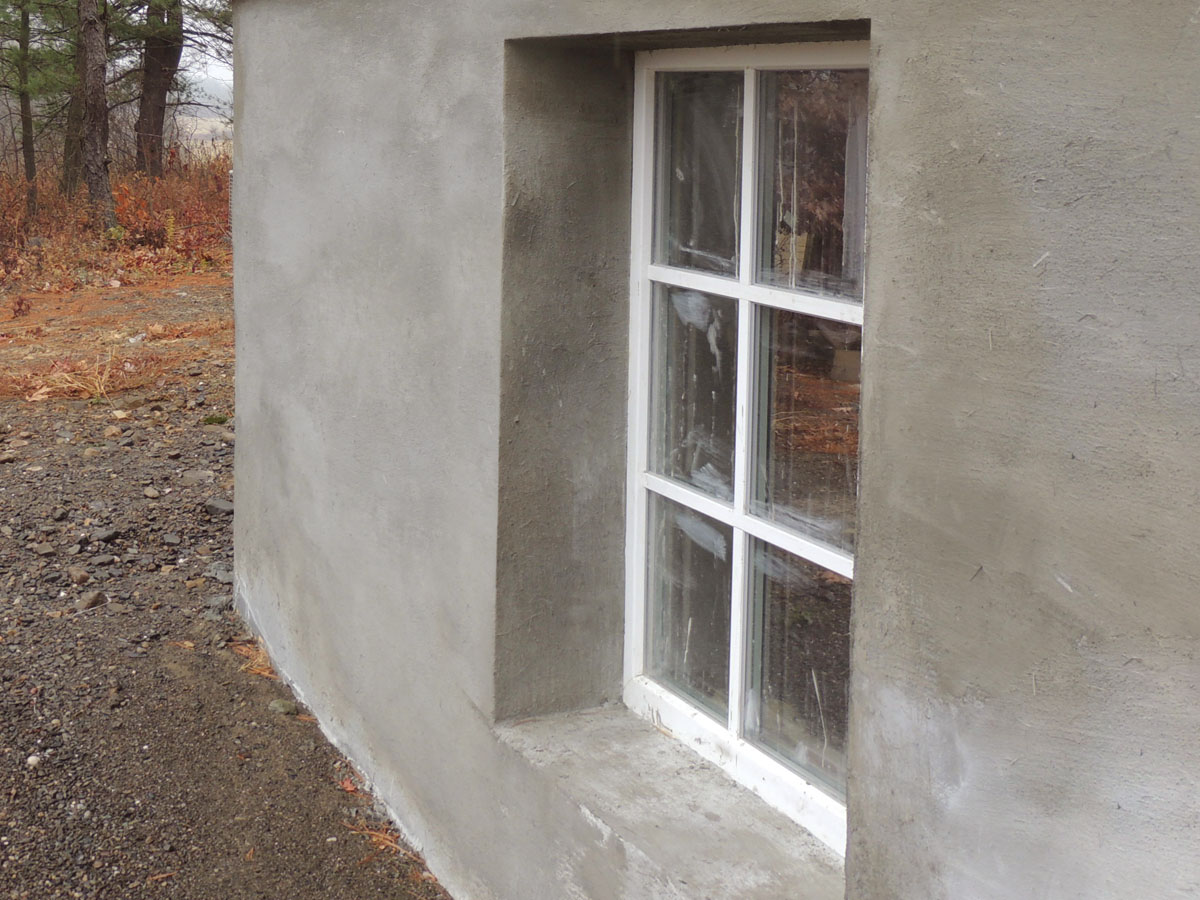 The stucco product that we used was Parge-All 825, specially formulated to apply over foam. When the company was contacted, they suggested that cold weather caused the cracks last fall. The product instructions say don’t apply if the weather drops below 40 degrees. However, when we applied new stucco at the end of August, we still got cracking, even with temperate weather.
The stucco product that we used was Parge-All 825, specially formulated to apply over foam. When the company was contacted, they suggested that cold weather caused the cracks last fall. The product instructions say don’t apply if the weather drops below 40 degrees. However, when we applied new stucco at the end of August, we still got cracking, even with temperate weather.
Researching online information, combined with on the job testing, solved the problem. First, we applied a thin scratch coat to set up the surface of the foam, letting it dry for several days. This layer always cracked. Then we applied a final top layer that sets up without cracking. With our exterior foam repaired and the stucco applied, the house was buttoned up for winter 2013.

